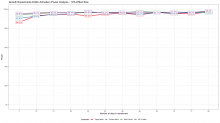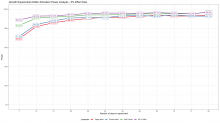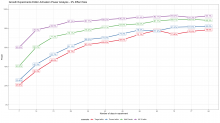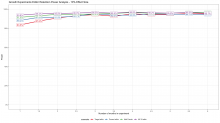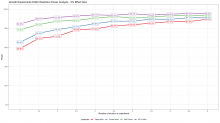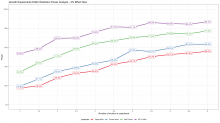As we scale up to more wikis and larger wikis, we'll have more data coming in from more newcomers. That may mean that we won't have to keep data around for as long in order to achieve statistical significance for our results.
In this task, we want to calculate our experimental power as we add more wikis on top of the ones we have, to get a sense of how long activation and retention experiments will need to run. It would also be good to know how long simpler experiments would need, such as experiments like T238888: Variant tests: "initiation" test (A vs. B), which are looking at a much more frequent activity than retention: clicking on a module on the homepage.
I think we should compare the power of these four groups of wikis:
- Original target wikis: Czech, Korean, Arabic, Vietnamese
- Current set: Czech, Korean, Arabic, Vietnamese, Ukrainian, Hungarian, Armenian, Basque
- Adding just French: Czech, Korean, Arabic, Vietnamese, Ukrainian, Hungarian, Armenian, Basque, French
- Adding our next set: Czech, Korean, Arabic, Vietnamese, Ukrainian, Hungarian, Armenian, Basque, French, Polish, Persian, Swedish, Danish, Indonesian, Italian, Portuguese.
